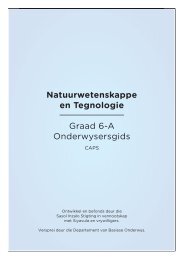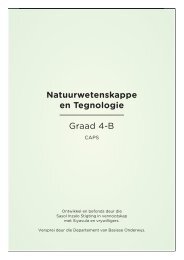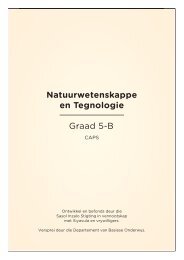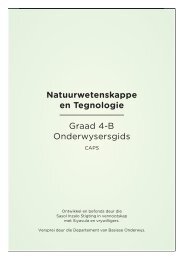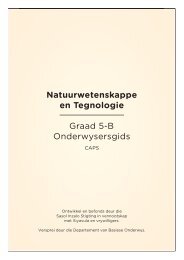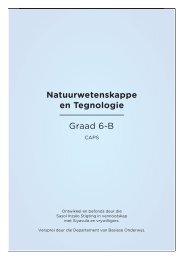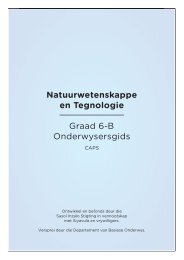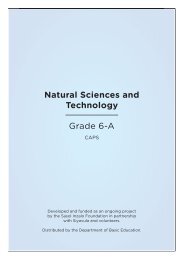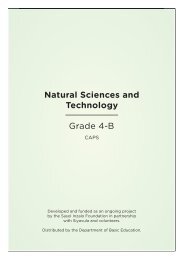Natural Sciences and Technology Grade 5-B ... - Thunderbolt Kids
Natural Sciences and Technology Grade 5-B ... - Thunderbolt Kids
Natural Sciences and Technology Grade 5-B ... - Thunderbolt Kids
You also want an ePaper? Increase the reach of your titles
YUMPU automatically turns print PDFs into web optimized ePapers that Google loves.
INSTRUCTIONS:<br />
1. Collect two tins of soil from places you choose. These are<br />
samples of each kind of soil (a sample is alittle bit to study).<br />
2. Feel the two samples in your h<strong>and</strong>. How do they feel<br />
dierent? Do they smell dierent?<br />
Teacher's Note<br />
Ask for oral answers, no written answers.<br />
3. Spread a teaspoonful on the white paper <strong>and</strong> look at each -in<br />
what ways do they look dierent?<br />
Teacher's Note<br />
Ask learners for oral answers. Make sure you get answers from<br />
dierent learners <strong>and</strong> it is not just the same learners each time.<br />
4. Then put your soil samples into the glass jars. Pour in water to<br />
make the jar almost full, cover the top <strong>and</strong> shake each jar to<br />
mix the soil <strong>and</strong> water.<br />
5. Now leave the two jars to st<strong>and</strong> until tomorrow. The water<br />
must not move.<br />
6. In the morning you will see something like in the picture<br />
below. In each jar, the water has let the large grains settle at<br />
the bottom, the very small grains are on top, <strong>and</strong> the clay<br />
grains are so small they are still mixed with the water. You<br />
may see some plant parts floating on the water.<br />
7. Your two jars will show dierent layers. In one jar, you might<br />
see a lot of s<strong>and</strong>, <strong>and</strong> in the other jar you might see less s<strong>and</strong>.<br />
110 Earth <strong>and</strong> Beyond



